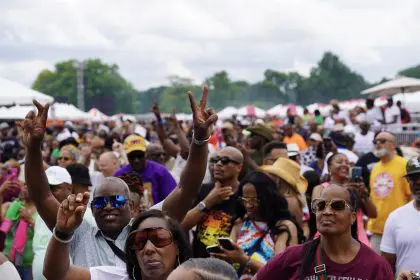 During the month of October, it is easy to tell what is on the minds of most Americans health wise with the inordinate amount of pink we see around us daily. But what is lost in all the pink is the color purple, which is the color selected to represent Domestic Violence Awareness Month (DVAM).
During the month of October, it is easy to tell what is on the minds of most Americans health wise with the inordinate amount of pink we see around us daily. But what is lost in all the pink is the color purple, which is the color selected to represent Domestic Violence Awareness Month (DVAM).
Domestic Violence Awareness Month evolved from the “Day of Unity” in October 1981 conceived by the National Coalition against Domestic Violence and was established to build a network of people across the nation who was working to end violence against women and their children. In October 1987, the first Domestic Violence Awareness Month was observed.
By definition, domestic violence is “the willful intimidation, physical assault, battery, sexual assault and/or other abusive behavior perpetrated by an intimate partner against another.” It is estimated that one in every four women will experience domestic violence in her lifetime and that 1.3 million women are victims of physical assault by an intimate partner each year. Although 85 percent of domestic violence victims are women, men are not immune to being victims as well.
Females who are 20-24 years of age are at the greatest risk of nonfatal intimate partner violence with African American of this demographic experiencing domestic violence at a higher rate than their white counterparts. Experiencing on average 29 acts of domestic violence per 1,000 black women compared to 20 per 1,000 for white women. Moreover, low-income women are at a higher risk of being physically assaulted by an intimate partner than other women with higher socioeconomic status with nearly 60 percent of women receiving welfare having been subjected to domestic violence as adults, as compared with 22 percent of women in the general population.
Domestic violence is a serious problem and still requires serious attention. Just last week, the Topeka, Kan., City Council debated one rather controversial one: decriminalizing domestic violence. And with the recent economic downturn, a new 2011 study has noted a correlation between the lagging economy and a rise in domestic violence. Of the more than 700 domestic violence shelters studied nationwide, 77 percent said victims they served stayed longer in abusive relationships because of the economy. Domestic violence is an epidemic affecting individuals in every community, regardless of age, economic status, race, religion, nationality or educational background. It is just as important as breast cancer or any other health concern in our community, and we should not forget it.












